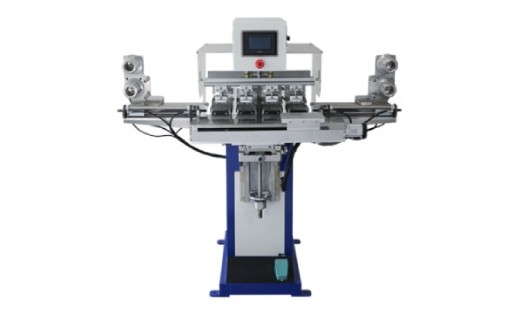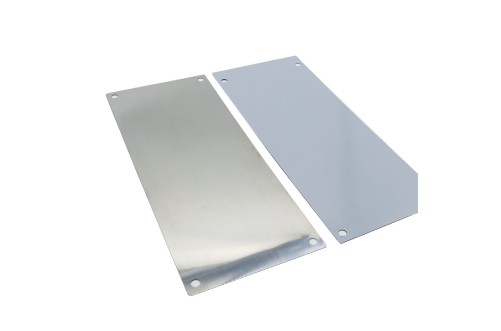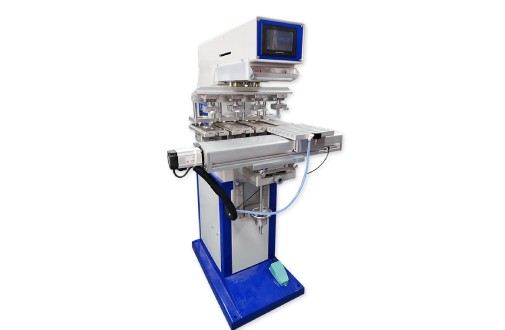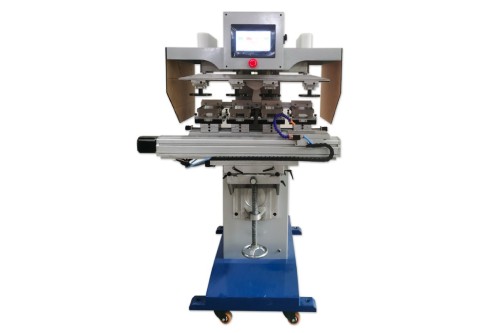Printing Pad Material
Pad printing is a popular process for transferring images from a printing plate to a substrate surface. It is widely used in the printing industry to decorate and label products such as electronic devices, toys, medical equipment, and many more. The printing process involves a pad made of silicone rubber that picks up the image from the printing plate and transfers it to the substrate. Silicone rubber is the most common material used for making pad printing pads. This article explores the various silicone rubber pads used in pad printing.

Silicone Rubber for Pad Printer Pads
Silicone rubber is a highly versatile material that has excellent properties, such as high resistance to heat, cold, and chemicals, good electrical insulation, and superior tear and wear resistance. These properties make it an ideal material for making pad printing pads. Silicone rubber pads are highly flexible, durable, and long-lasting, making them perfect for repeated use in pad printing.
There are various types of silicone rubber pads for pad printing, and they are classified based on their hardness and color. The hardness of silicone rubber is measured using a Shore durometer, which measures the material’s resistance to indentation. The hardness of silicone rubber pads ranges from 10 Shore A to 70 Shore A, with 10 Shore A being the softest and 70 Shore A being the hardest.
Soft Silicone Rubber Pads
Soft silicone rubber pads have a Shore hardness of 10 Shore A to 25 Shore A. They are highly flexible and can conform to the shape of the substrate surface, making them perfect for printing on uneven surfaces. Soft silicone rubber pads are ideal for printing on delicate substrates such as glass, ceramics, and plastics. They are also suitable for printing irregularly shaped objects such as bottles, cups, and spheres.
Medium Silicone Rubber Pads
Medium silicone rubber pads have a Shore hardness of 30 Shore A to 45 Shore A. They are more rigid than soft silicone rubber pads but still have some flexibility, making them ideal for printing on flat or slightly curved surfaces. Medium silicone rubber pads are suitable for printing on metal, wood, and rubber substrates.
Hard Silicone Rubber Pads
Hard silicone rubber pads have a Shore hardness of 50 Shore A to 70 Shore A. They are the most rigid of the three types of silicone rubber pads and are suitable for printing on flat surfaces. Hard silicone rubber pads are ideal for printing on plastic, metal, and glass substrates.
Silicone Rubber Pad Colors
Silicone rubber pads for pad printing come in different colors, each with a specific purpose. The most common colors of silicone rubber pads are red, green, and blue.
Red Silicone Rubber Pads
Red silicone rubber pads are the most popular color for pad printing pads. They are versatile and can be printed on a wide range of substrates. Red silicone rubber pads are ideal for printing on plastics, metals, and glass substrates.
Green Silicone Rubber Pads
Green silicone rubber pads are softer than red silicone rubber pads and are ideal for printing on delicate substrates such as ceramics and glass. They have excellent release properties and can pick up fine details from the printing plate.
Blue Silicone Rubber Pads
Blue silicone rubber pads are harder than red ones and are suitable for printing on problematic substrates such as metal and glass. They have excellent ink transfer properties and can produce high-quality prints.
Choosing the Right Silicone Rubber Pad for Pad Printing
Choosing the right silicone rubber pad for printing is essential for producing high-quality prints. The choice of place depends on several factors, such as the substrate material, the shape of the object, the image size, and the ink used.
Substrate Material
The substrate material is crucial in choosing the right silicone rubber pad for pad printing. Soft silicone rubber pads are suitable for printing on delicate substrates such as glass and ceramics. In contrast, hard silicone rubber pads are ideal for printing on rigid substrates such as metal and glass. Medium silicone rubber pads are suitable for printing on substrates such as wood and rubber.
The shape of the Object
The shape of the object to be printed also influences the choice of a silicone rubber pad. Soft silicone rubber pads are ideal for printing on irregularly shaped objects such as bottles, cups, and spheres, while hard silicone rubber pads are suitable for printing on flat surfaces.
Image Size
The size of the image to be printed also plays a crucial role in selecting the right silicone rubber pad. Soft silicone rubber pads are suitable for printing fine details and small photos, while hard silicone rubber pads are ideal for printing larger images.
Ink Used
The type of ink used in pad printing also influences the choice of the silicone rubber pad. Some inks require a more rigid silicone rubber pad to transfer the image, while others require a softer silicone rubber pad.
Conclusion
Silicone rubber pads are essential components in pad printing. They are highly versatile, durable, and long-lasting, making them ideal for repeated use in pad printing. The choice of silicone rubber pad depends on several factors, such as substrate material, the shape of the object, the image size, and the ink used. Soft silicone rubber pads are suitable for printing on delicate substrates and irregularly shaped objects, while hard silicone rubber pads are ideal for printing on rigid substrates and flat surfaces.
Medium silicone rubber pads are suitable for printing on substrates such as wood and rubber. The color of the silicone rubber pad also plays a role in its performance, with each color having specific properties. Red silicone rubber pads are versatile and can be used for printing on a wide range of substrates, while green silicone rubber pads are suitable for printing on delicate substrates. Blue silicone rubber pads are ideal for printing on rigid substrates.







